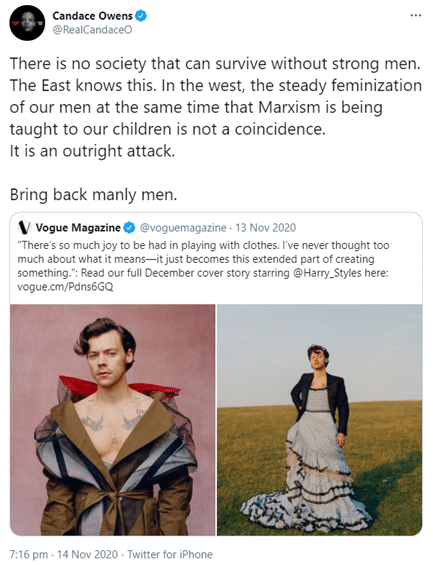Working in academia comes with a lot of responsibility. For people working on teaching and research contracts there are a number of responsibilities that aren’t immediately obvious even if you have some vague appreciation of how academia work.
Firstly, you must bring in money to support a group of researchers – this means applying regularly for grants from a wide range of funding bodies. Once you’ve secured funding (not a guarantee), you become the Principle Investigator (PI), and have all the admin related to implementing the research that is funded by those grants. That might mean writing job adverts to hire post-doctoral research associates, or writing PhD studentship adverts to bring in PhD students. Then you have to deal with all the admin of filling those positions, and the responsibilities of being responsible for a team of staff and students. It’s no small job to manage a team of people who are dependent on you for their salaries, education and general professional development and wellbeing.
You’re also responsible for all of the projects you have funded – you might not have time to do the research yourself, but you do need to make sure your staff or students are supported in completing that research, which includes designing and conducting the experimental work, analysing the data and interpreting the results. It also includes ordering the materials needed to complete the research and deciding how that gets paid for. Even if your staff make the orders, you are responsible for signing off on them. Your staff and students need support in writing manuscripts and reports, presenting their work at conferences and meetings. On top of that, you must work on manuscripts and reports yourself, and present that work at conferences and meetings as well as (outside of Covid) travelling to those conferences and meetings.
That’s the research side – and it’s a full-time job in itself. But you are also responsible for teaching. That can include designing an entire undergraduate module and managing and lecturing on that module, or it might “only” mean you lecture on other people’s modules. Either way, you might well be racking up hours and hours of lecturing time for hundreds of students at a time. You are also likely to be responsible for one or more tutor groups, as their touchpoint throughout their entire degree. Plus, you might design or teach on practical courses. You are also likely to supervise a number of undergraduate or master’s degree dissertation projects each year – helping those students design and implement a ten-week research project in such a way that they get enough data to write and submit a report and present short talks or posters on their work. Each of those students might later ask for your help in applying for their own PhD positions or jobs and you would, of course, be happy to help them by giving them advice, interview practice or writing them references. Teaching is also a full-time job.
Once you add in the demands of doing all of this under Covid conditions, the work load sky rockets – you must convert all your teaching to online teaching and re-design or record your lectures online. You must figure out how to support your students when you can’t see them as frequently as you normally would, and you must support all your staff through these challenging times. You might need to apply for extensions from your funding bodies, figure out how to present work online and work out how to keep working despite a lack of access to labs. Plus you’re now maybe home schooling and sharing your work space with a partner, or dealing with being entirely alone. You’re worried about your family and friends. All the stuff that we’ve all gone through to greater or lesser extents.
But at least you have some level of job security. Academia is precarious, many are on short (under 3-year) fixed-term contracts, but once you’re at the level of managing your own group, you have some level of security. You are dedicated to your university, and you hope they are dedicated to you.
So imagine the distress of 47 members of staff at the University of Liverpool who were told recently that their University was considering making them redundant.
University redundancies
At the end of January the Guardian reported that at least 9 universities were planning redundancies.
They wrote:
“In London, the University and College Union is fighting potential job losses at three institutions: the University of East London; Goldsmiths; and Senate House, University of London. Elsewhere, redundancies are planned at the universities of Liverpool, Leeds, Leicester, Southampton Solent, Brighton, and Dundee.”
What many of these redundancy proposals have in common, as far as I can tell, is a lack of transparency. The reason particular staff members have been or will be selected is not clear at many of these institutions. Some say they are not making any judgement on the performance of their staff. While others, like the University of Liverpool, have given criteria that are perceived as particularly problematic across the academic community.
The University of Liverpool
In June 2019, the University of Liverpool Faculty of Health and Life Sciences, announced new plans for a “strategic realignment” – a restructuring – with the stated goal of “improving health outcomes throughout the Liverpool City Region and beyond”. Professor Louise Kenny, the Pro-Vice-Chancellor for the faculty said:
“Project SHAPE will enable us to realign our expertise through a new structure and vision, which enables us to work in a more agile way and respond to unmet societal needs locally, nationally and globally.”
And the article said:
“The plans aim to deliver world-class, research-connected teaching and to deliver scientific research excellence with societal impact. This will provide the very best environment for tomorrow’s students, and create a platform for the University to engage in effective partnership working across the region to translate our fundamental research strengths into life-changing benefits, both locally and globally.”
Phase one of this project was to map out a new structure. Creating “four new institutes and four supporting directorates”
And then came phase two.
In a recent statement from the University, they describe phase two this way:
“The University of Liverpool is currently engaged in the formal process of collective consultation with trade unions about the proposed redundancies in the University’s Faculty of Health and Life Sciences (HLS) as part of Project SHAPE.”
The University were considering making 47 academics redundant. But the important question is how were those 47 selected?
In their public statement in March the University said:
“Firstly, we used a measure of research income over a five-year period to identify colleagues who may potentially be placed at risk of redundancy (although it should be noted that anyone employed at or below 0.2FTE, or who was appointed or promoted later than 2016, was not in scope).”
“At this point, a range of factors that might remove colleagues from the pool of those potentially at risk were considered, including the contribution of positive citation metrics where appropriate.”
So what does this mean? The first part, hopefully, is self-explanatory – if you’re bringing in plentiful grants, you’re ok. If, for whatever reason, your grant income is reduced then you’re at risk of redundancy. The second part relates to academic publications. You might have heard of the (arguably incredibly flawed) “publish or perish” model of academia – the idea that academics must regularly be publishing their work in academic journals, and that these must be high quality journals with reasonable impact factors. But it goes a step further than that. Your publications must also be valuable to the wider community. One way to measure that value is to look at how many publications cite or “link back” to your publications.
Citation metrics
So what do we know about the citation metrics? Currently not a great deal, the University haven’t said publicly what citation metrics they are using. But two of the people who have identified themselves anonymously as at risk of redundancy have mentioned the Sci-Val Field Weighted Citation Impact (FWCI) and the same metric is mentioned in an open letter from University of Liverpool academics.
SciVal are an analytics service from Elsevier an academic publisher. The Field Weighted Citation Impact of a researcher is the ratio between the total citations received on the person’s published output, and the total citations that would be expected based on the average in the subject field.
So a ratio of 1 means you’re receiving a number of citations within the average of academics within your field, a ratio above 1 means you’re receiving more citations than average and below one means less than average.
This measure was never intended to be used to rank the productivity of individual academics. The San Francisco Declaration on Research Assessment, to which The University is a signatory, recommends that institutions:
“consider the value and impact of all research outputs (including datasets and software) in addition to research publications, and consider a broad range of impact measures including qualitative indicators of research impact, such as influence on policy and practice.”
Using citation metrics as a short cut has many problems. In an article for Times Higher Education, Professor Moher of the University of Ottawa who is an expert in scientific publishing said: “Inappropriate use of research metrics incentivises poor science, corner-cutting, and data massaging; while creating insecure, untrustworthy, and low-morale research cultures.” In the same article, experts in research metrics Ismael Rafols, Ludo Waltman, Sarah de Rijcke, and Paul Wouters from the Centre for Science and Technology Studies at Leiden University, said that the “proposal seriously contravenes the principles of ethical and responsible use of research metrics”
In an open letter from experts in research evaluation and bibliometrics at Leiden University sent to The University of Liverpool, concerns expressed that the that “this proposal seriously contravenes the principles of ethical and responsible use of research metrics as stated in documents such as the San Francisco Declaration on Research Assessment, the Leiden Manifesto or the Metric Tide.” Going on to state that “we are concerned about the statistical robustness of the Scopus Field Weighted Citation Impact score, in particular when applied to relatively low number of publications – for example, below 50-100 publications, which is generally the case for individuals.”
Teaching goals
The University of Liverpool stated their goal of providing “the very best environment for tomorrow’s students”. According to the public statements from The University, when considering the redundancies of academics they are focusing on research income and citation metrics. Which leads me to the impression that contribution to teaching is not being considered. This seems completely at odds with the goal of improving teaching – in fact, those academics who give the most to enhancing the education of students are likely to be those who have less capacity for bringing in grant income and publishing academic articles.
Equality, diversity and inclusion (EDI)
There are plenty of other reasons an academic might not have the same grant income or citation status as others in their institution. They might work reduced hours due to disability, they might have had periods of parental leave, taken time off for ill health or grief or be a carer, they might have invested additional working time into initiatives that benefit The University. An open letter to The University highlighted that “the majority of the work to improve EDI (e.g., to decolonise the curriculum, to lead on anti-racism efforts, to obtain funding for EDI posts around antiracism, to mentor and coach early career colleagues, to widen participation, and to make the university a champion of community) is built on gendered and non-white labour.”
The need for transparency
Maybe The University of Liverpool are considering contribution to teaching and contribution to EDI projects in their assessment of these academics, maybe they did mitigate for disability, child rearing, sickness, grieving or caring. Currently, we have no idea because there is a lack of transparency.
The University say this is due to confidentiality purposes saying in their statement:
“The University has maintained confidentiality around the proposals being discussed within collective consultation, but given the inaccuracies circulating publicly about these proposals, we have decided to release further information on the key issues being discussed.”
And confidentiality surrounding this is important; however, if staff have been made individually aware of their risk of redundancy, they deserve to know the full criteria. Either, they have been made aware of the full criteria and it is only these two, or they haven’t been made aware of the full criteria and they are left with uncertainty and anxiety.
The need for transparency goes beyond the individuals directly affected. As uncertainty continues, other academics at the University (who also already invest a lot of time in research responsibilities that go beyond grant income and publications) are left with distress and concern both for their colleagues at immediate risk of redundancy, but also for their own situations and how they might protect themselves from sudden, unexpected redundancy in future. Are those academics reassured that they are deemed “productive” enough, or do they now fear their time is around the corner and they cannot protect themselves due to a lack of certainty of what is considered a priority for the University.
But it’s not just people on teaching and research contracts who are worried. One thing the University hasn’t said anything about is how these redundancies will be handled. All of these staff will have their own PhD students and post-doctoral researchers to support. We do not know what will happen to those students and post docs. Will they keep their positions in the University? That is certainly unclear for people in post-doctoral positions who are on fixed term contracts. And for the PhD students? Will they be transferred on to other PIs mid-way through their courses or will they be expected to move – if their PI manages to find a position at another university.
As for teaching responsibilities? Will they now be split between remaining academics who now feel their commitment to teaching is less valuable than their commitment to writing grant applications and manuscripts for publication?
All of this is currently uncertain and leaves the entire faculty reeling from treatment of these staff that – as the open letter puts it – is “callous and utterly unacceptable”.















![A rose with two distinct colours - red on one half, white on the other. Image by Raquel Baranow [CC SA by 4.0]](https://www.skeptic.org.uk/wp-content/uploads/2021/03/TwoColoredRoseChimera-375x386.jpg)
